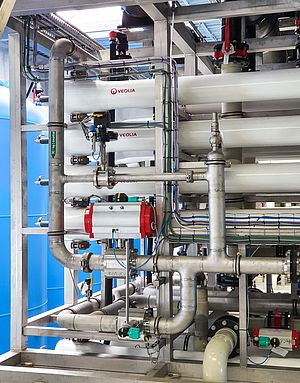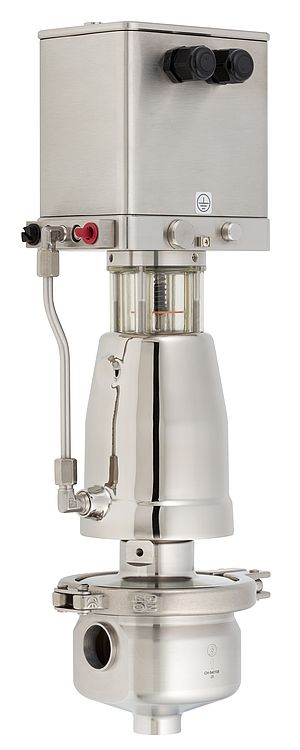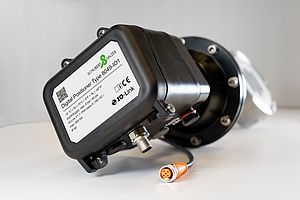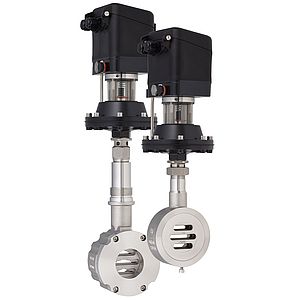In many industrial processes, three-way valves perform the important function of mixing or dividing flowing media. Schubert & Salzer has now developed the first three-way ball sector valve for optimum flow control of liquids and gases.
"Our approach of using the ball sector design for three-way valves is completely new. In this way, we achieve about 20% higher KVS values than three-way valves with a conventional design", explains Reiner Wolf, Head of Mechanical Design and Development at Schubert & Salzer Control Systems. These extraordinarily high flow rates are achieved through the special design of the ball sector and the valve body. The resulting straight flow in one direction and the minimised flow deflection in the other result in the very high and almost identical KVS values.
Low actuating forces
Superior control accuracy is ensured by the optimised contour of the ball sector and its backlash-free bearing, together with the actuator and positioner. Thanks to the positioning angle of 90 degrees, a very wide range of control can be achieved. The rangeability is 300:1.
The forces of the flowing media are completely absorbed by the bearing shafts of the three-way ball sector valves, which means that pneumatic or electric actuators require only very low actuating forces. The relatively low actuator torque also remains almost constant over the entire control range. Changes in differential pressure therefore have little effect on the control accuracy of the three-way ball sector valves. The actuator can be mounted on either the top or bottom of the shaft. This gives a high degree of flexibility in adapting to different installation situations.
Optional digital positioner
The control potential of the three-way ball sector valves can be maximised in combination with the Schubert & Salzer digital positioner type 8049. In addition to Ex and FM versions, the positioner can also be equipped with IO-Link. This provides comprehensive status data for analysing and predictive maintenance.
Three-way ball sector valves offer particularly high added value in temperature control and mixing processes in the steel, chemical, food and beverage industries, as well as in power generation, the manufacture of plastic and rubber products and for use in test benches.






















